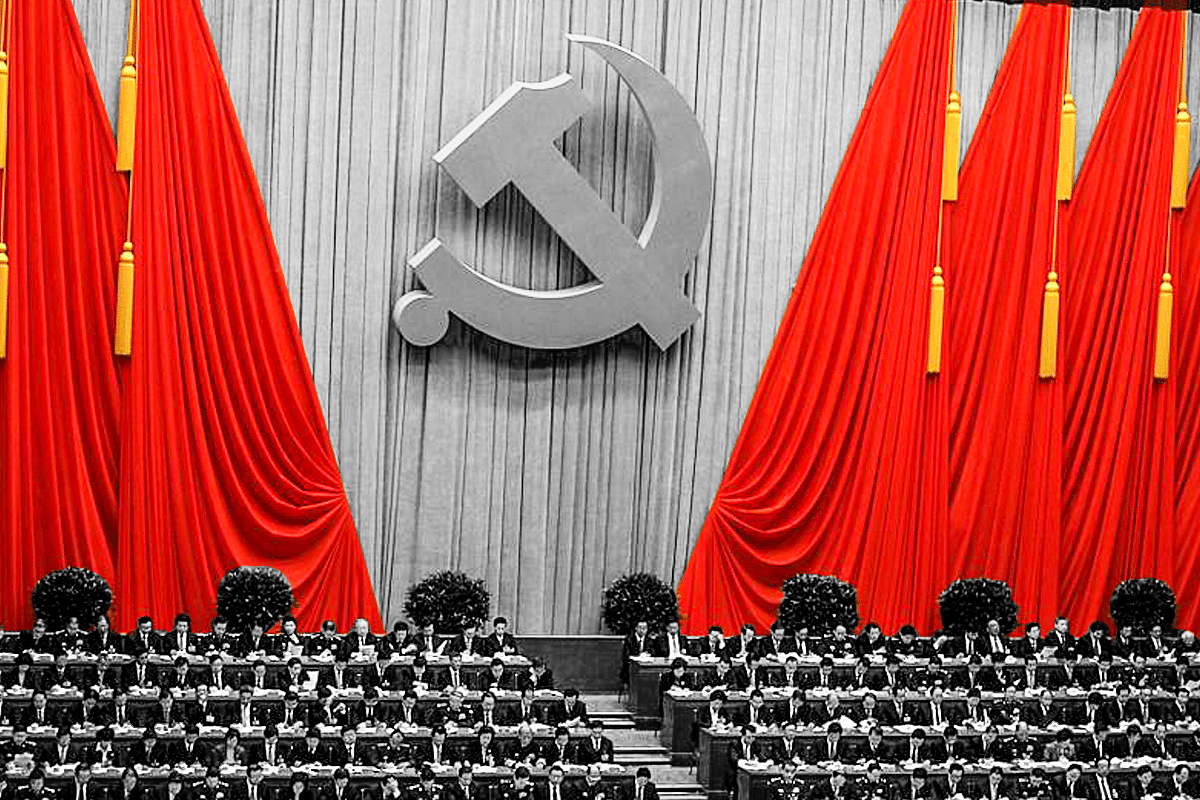World
From Borders To Industry: Settle In, Because India Is In For A Prolonged Contest With China
- What the world has suddenly woken up to is the essentiality of China to the global trade order.
- With most global supply chains going through the nation, merely calling for a boycott of Chinese goods is not enough to cage the dragon.

The real China that India has to deal with.
There has been a growing discussion around China and its staunch stance in international matters.There has also been a hardening of its foreign policy as it ferociously attempts to defend its position in the global economic system.
That there has been such a hardening of stance is for all to see, but it has been an outcome of decades of planning and should not come as a surprise, given how it has become an integral part of international trade.All major supply chains go through China and the approach adopted by the Chinese has been of deliberate import substitution to reduce their dependence on other countries.This, as it ensured that other countries get more dependent on the Chinese for their goods and services.A good example of this is the relentless pursuit of China in manufacturing state-of-the- art ballpoint pen tips — a fine piece of engineering.For several years, the tip was imported, even as China produced the rest of the pen. However, consistent focus on reducing their dependence on other countries made them create a state-of-the-art nib, which could reduce their dependence on other countries.
This, in turn, has ensured that China becomes a default integral part of the manufacturing process across the globe, which gives it enough leverage to harden its stance on issues across the world.The shift in their approach was visible post Covid. Just as global powers woke up to the importance of China in international value chains, China hardened its stance on all major issues.It denied any responsibility for Covid, hardened its stance on Hong Kong and Taiwan, while at the same time aggressively advocated for a free-trade regime to continue.There has been a growing realisation that their indispensability to global economic stability gives them the necessary leverage to act in such a manner.
This makes dealing with China complicated, as India too depends on China for a lot of its manufactured goods and several export-oriented sectors such as the pharmaceutical sector, which has close backward linkages with the Chinese.We need to be rational in formulating a multidimensional approach on China, as no country would be capable enough in ensuring decoupling of the global economic system.
What this means is the recognition that there is a growing threat, not just to the global political system, but also to regional stability and territorial integrity across the region, which has several implications for India.India’s rise is viewed as against the interests of the Dragon and, therefore, it is likely to intervene aggressively to combat this threat over the coming years.This means frequent tussles and border disputes on the eastern front, but more importantly, it means that we need a consistently strong policy to be able to handle these issues as and when they arrive.
The recent standoff could be a by-product of multiple factors that have shaped the situation over the last couple of weeks, and partly, a reaction to India’s strong push for shifting global supply chains combined with the intention of distracting the focus from what has been going on in Hong Kong.
However, we need to recognise that even after the resolution of the current stand-off, such issues are likely to frequently crop up as we attempt to decouple our supply chains over the coming few years.What is indeed needed is that the multidimensional approach combines strong economic alliances with developed economies and democracies world over, combined with deeper strategic and technology-sharing partnerships, especially across the defence sector.
The use of coercive hardball strategy by the Chinese is likely to be the norm going forward, as it flexes its muscles not just in front of India, but also in its bilateral relations with the West.However, to render it obsolete is to create a credible threat to its economic dominance over the coming few years.The process is likely to be a prolonged one rather than an immediate ban on Chinese products, as is being advocated across countries, including India.
What India is witnessing right now is just a teaser of what is likely to follow and the world must step up and take note.The world must recognise that China is where it is today because of a deep vision for 20 years, combined with political stability to convert that vision into reality.With democracies, this is unlikely to be the case and, therefore, what we need is a consensus not just amongst democracies but also amongst domestic political parties to ensure a consistent long-term strategy to protect the liberal world order.This is also important to ensure several sustainable and millennial development goals as we attempt to recreate the conditions that enabled several developing countries in the 20th century to emerge as developed economies.
Support Swarajya's 50 Ground Reports Project & Sponsor A Story
Every general election Swarajya does a 50 ground reports project.
Aimed only at serious readers and those who appreciate the nuances of political undercurrents, the project provides a sense of India's electoral landscape. As you know, these reports are produced after considerable investment of travel, time and effort on the ground.
This time too we've kicked off the project in style and have covered over 30 constituencies already. If you're someone who appreciates such work and have enjoyed our coverage please consider sponsoring a ground report for just Rs 2999 to Rs 19,999 - it goes a long way in helping us produce more quality reportage.
You can also back this project by becoming a subscriber for as little as Rs 999 - so do click on this links and choose a plan that suits you and back us.
Click below to contribute.
Latest